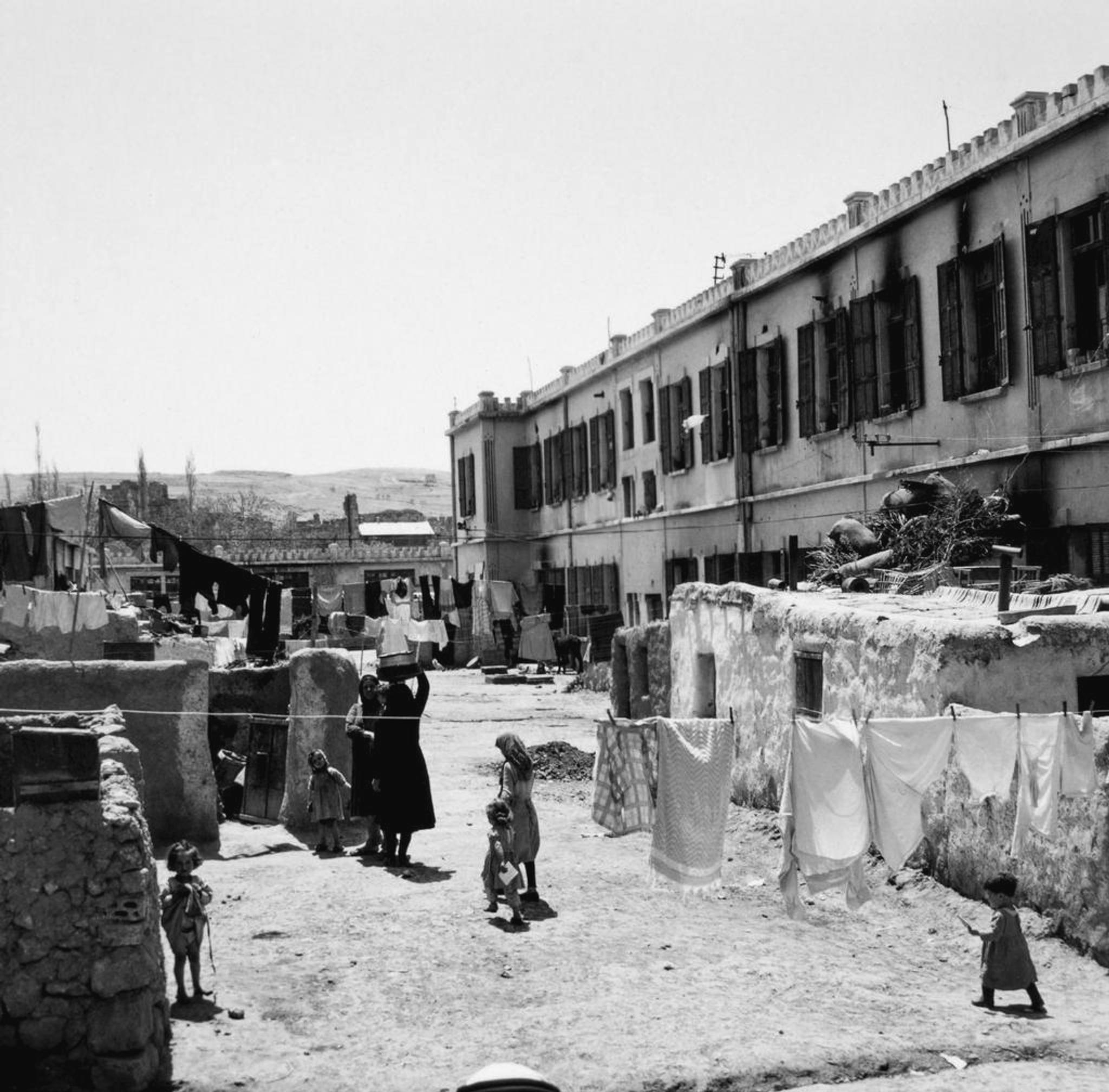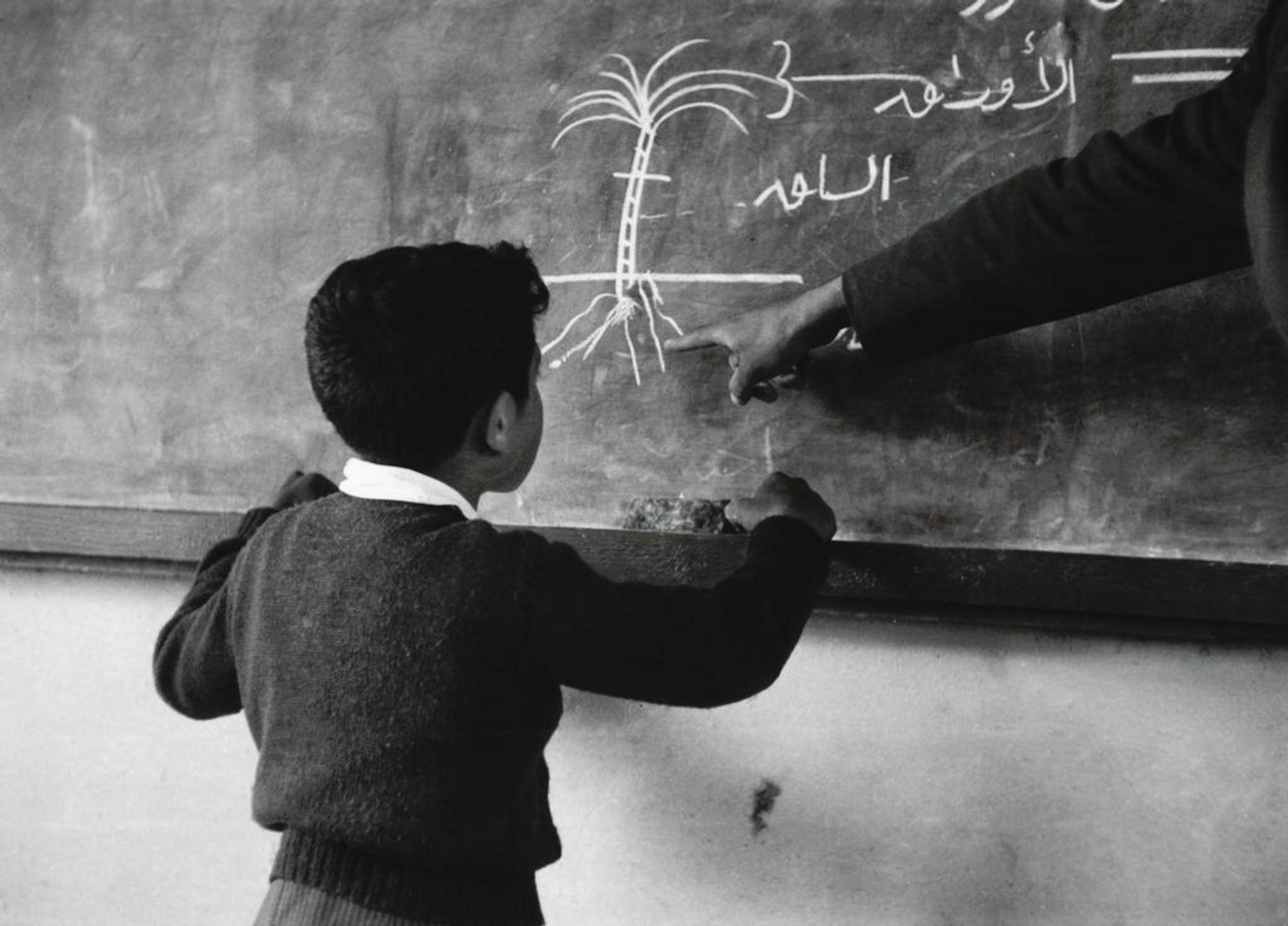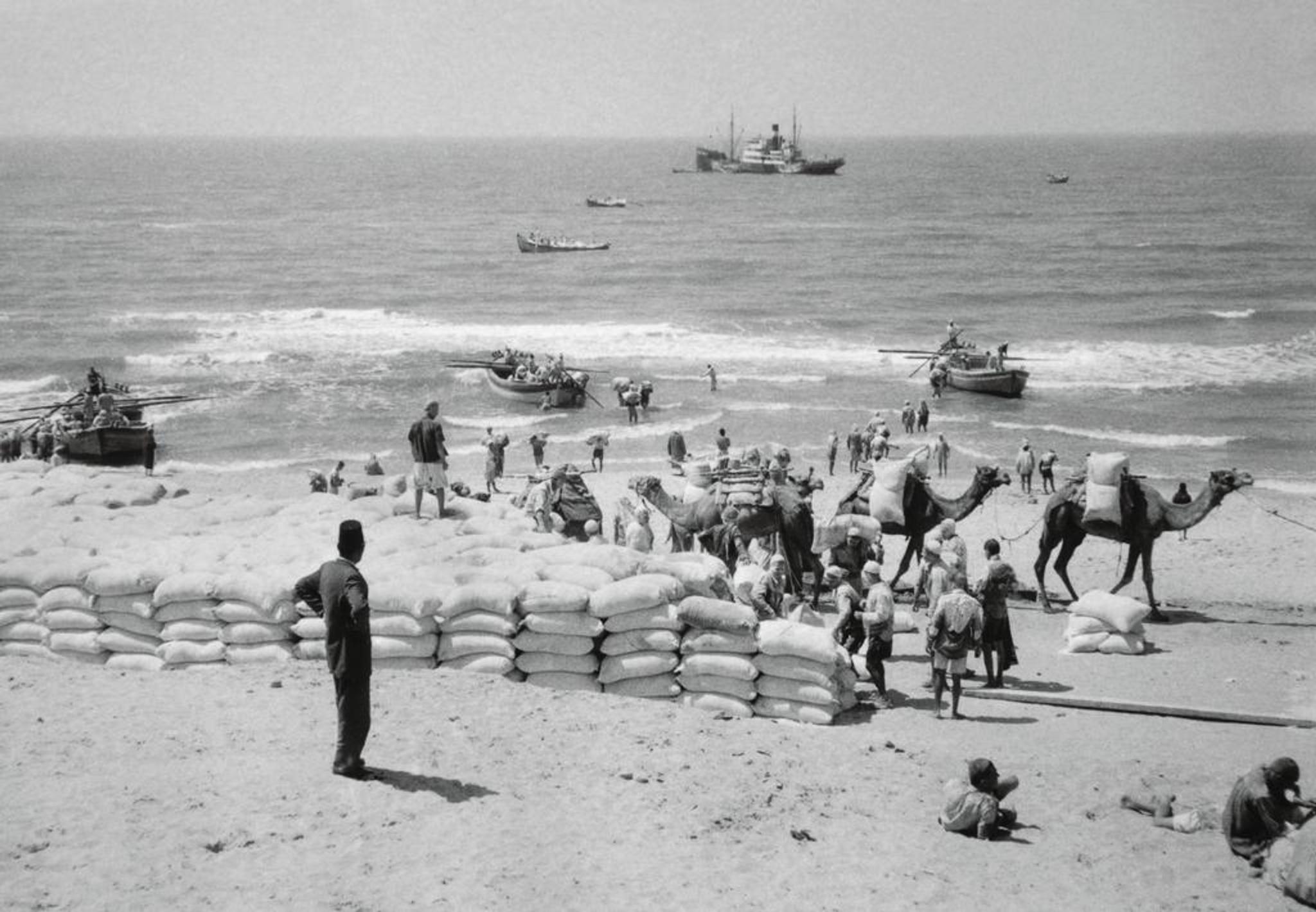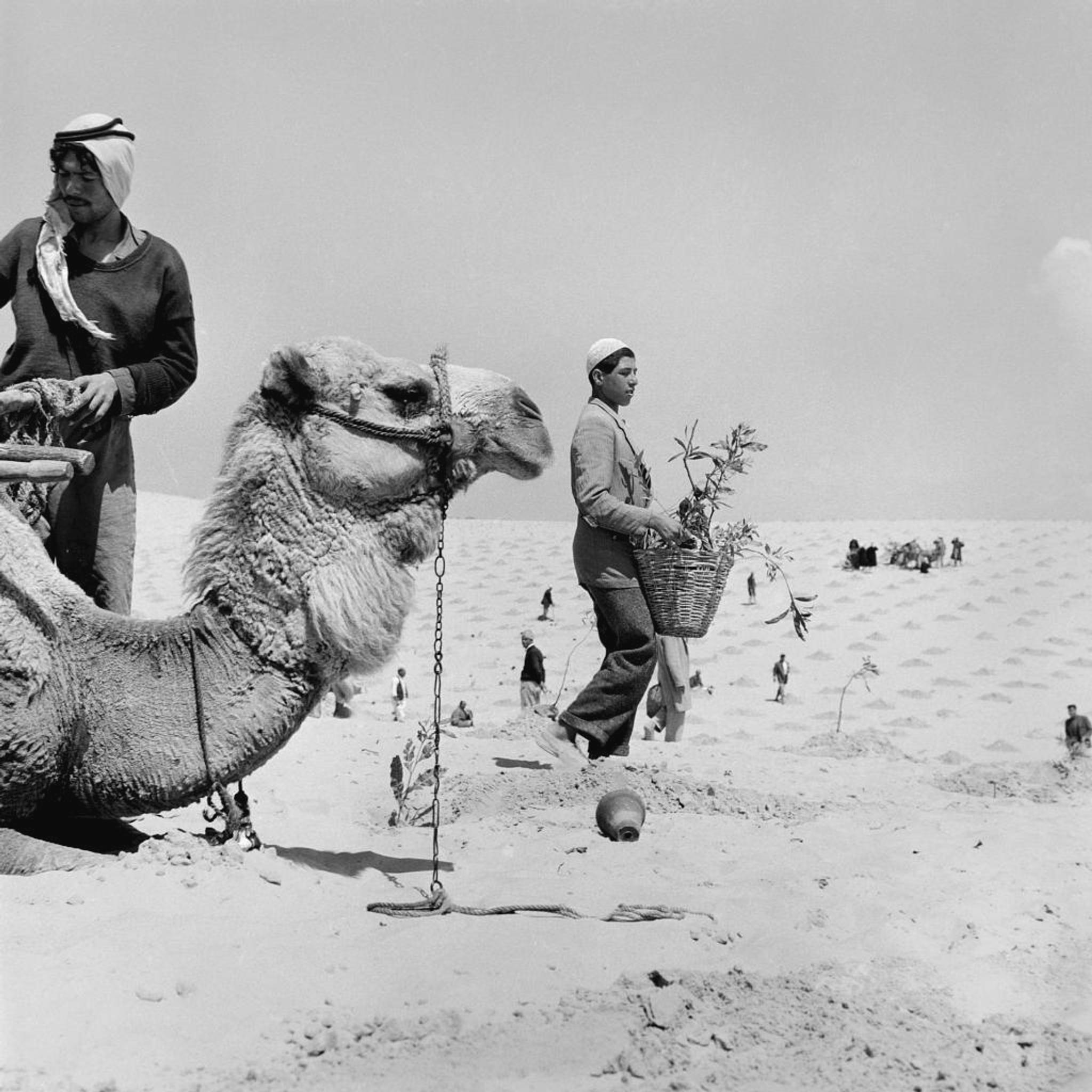
The image and the imaged
The school’s backyard is where the scene starts. Not a playground, but houses. The school appears like a citadel, or a city wall, encircling the refugee camp inside. The houses of the camp felt like one big home. Their domestic spaces poured beyond the confines of their individual walls. Lines of laundry connected them like a spider’s web. The school is built with cement, the houses with mud. Why might a school seem more permanent than a house? In the initial years after the exodus, to build with mud was a statement. It meant refusing displacement as a permanent condition. But when did the refugees start building their houses with cement? What did that say about the prospects of their return?
Inside the school, the child gazes at the chalkboard with attentiveness. A teacher’s hand guides him to a drawing, but his body falls out of the frame. Both, the gaze and the hand, lead us to the main subject of the photograph: the drawing on the board. The drawing is a rather simple diagram: a cross-section of a tree. The tree is simplified into three parts: the leaves, the stem, and the roots. The teacher’s index finger points towards the roots. Was the photographer trying to suggest an analogy? Uprooted, a Palestinian refugee child learns about roots.
Palestinian boy and teacher pointing at a drawing of a tree on a blackboard. Gaza Strip, April-May 1957.
Learning about roots was not merely figurative. Sustenance was a precondition for surviving resettlement. At times, food would arrive from the sea. The steamship, after cross-continental travel, would dock a mile or so away from Gaza’s shore. It was not there that the British invested in building a harbour during the Mandate, but all the way north, in Haifa.
The harbourless shore would instead send Palestinian boatmen, who would offload the steamship’s cargo onto smaller boats, delivering them to the city. On the shore, men and camels await the stacks of flour. The protagonists are all in the background. Closer to the camera, an Arab man with a tarboush stands to observe the procedure. Behind him, the humanitarian gaze is always ready to capture the moment.
Palestinian refugees transporting sacks of flour from a ship onto the beach as part of UNRWA’s relief work. Gaza Strip, May 1957.
But not all sustenance arrived from afar. The child was learning about roots for a reason. A decade had already passed since the exodus; the child had not even been born then. New roots had to be laid in this new terrain. It had to become livable. Stacks of flour arriving in the form of aid were hardly enough to feed their hunger. An older child, whose mother may have given birth to him en route to their new destiny, carries a sapling that awaits its plantation. Behind him, an ocean of sand appears, dotted with future offspring. They, too, were making uncultivated lands bloom, but unlike their colonisers, none of them did it for the camera. In fact, they all looked away from it.
Men planting Eucalyptus trees to cultivate the sand dunes as part of an UNRWA program. Gaza Strip, April-May 1957.


